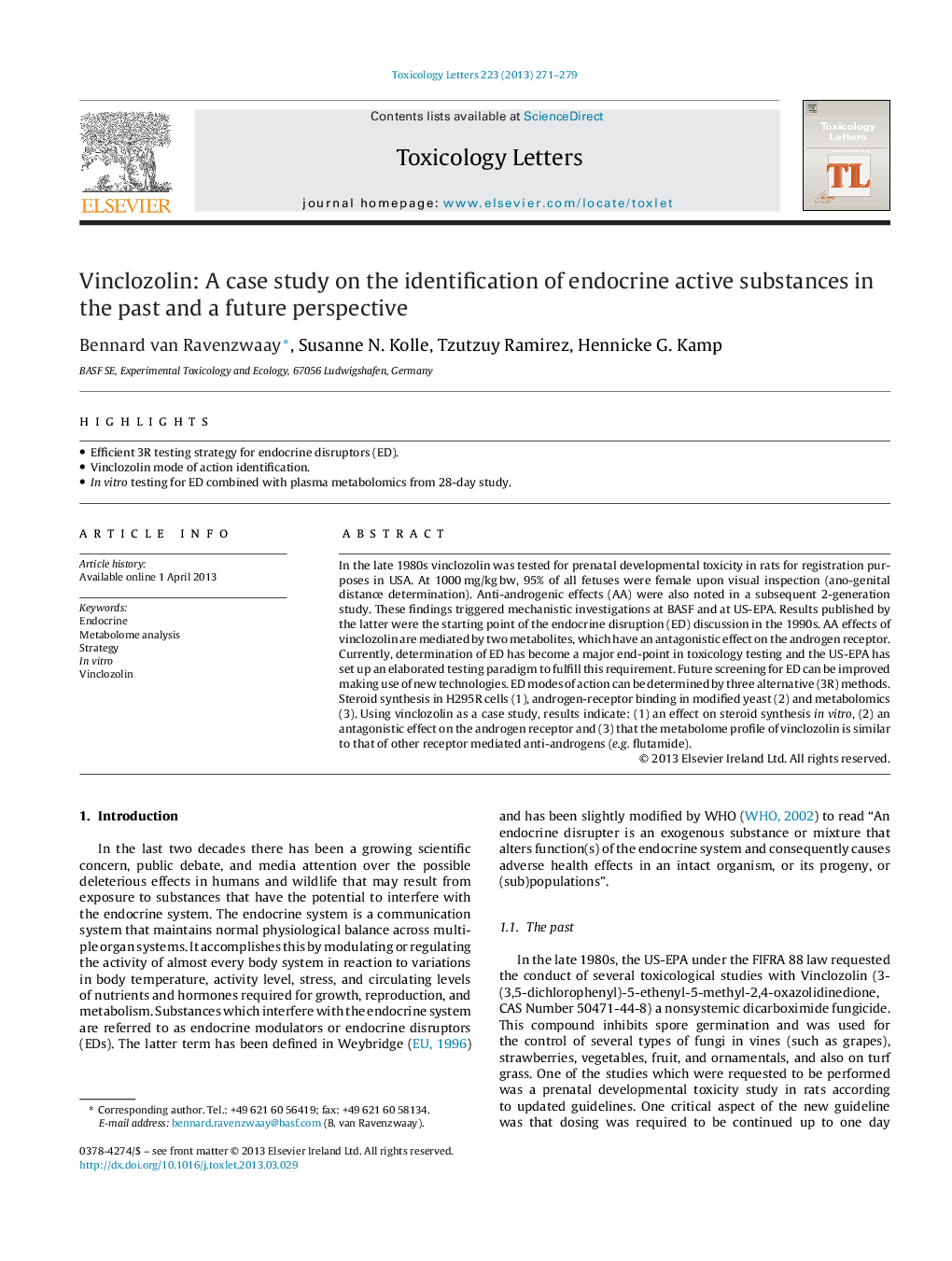| Article ID | Journal | Published Year | Pages | File Type |
|---|---|---|---|---|
| 5860509 | Toxicology Letters | 2013 | 9 Pages |
â¢Efficient 3R testing strategy for endocrine disruptors (ED).â¢Vinclozolin mode of action identification.â¢In vitro testing for ED combined with plasma metabolomics from 28-day study.
In the late 1980s vinclozolin was tested for prenatal developmental toxicity in rats for registration purposes in USA. At 1000 mg/kg bw, 95% of all fetuses were female upon visual inspection (ano-genital distance determination). Anti-androgenic effects (AA) were also noted in a subsequent 2-generation study. These findings triggered mechanistic investigations at BASF and at US-EPA. Results published by the latter were the starting point of the endocrine disruption (ED) discussion in the 1990s. AA effects of vinclozolin are mediated by two metabolites, which have an antagonistic effect on the androgen receptor. Currently, determination of ED has become a major end-point in toxicology testing and the US-EPA has set up an elaborated testing paradigm to fulfill this requirement. Future screening for ED can be improved making use of new technologies. ED modes of action can be determined by three alternative (3R) methods. Steroid synthesis in H295R cells (1), androgen-receptor binding in modified yeast (2) and metabolomics (3). Using vinclozolin as a case study, results indicate: (1) an effect on steroid synthesis in vitro, (2) an antagonistic effect on the androgen receptor and (3) that the metabolome profile of vinclozolin is similar to that of other receptor mediated anti-androgens (e.g. flutamide).
